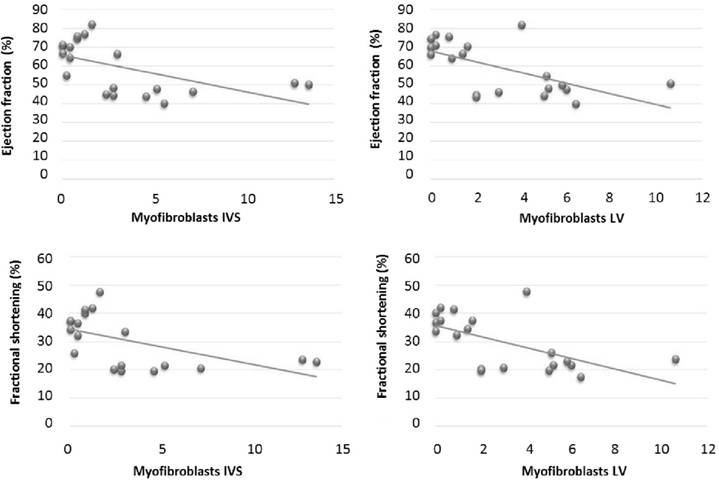ABSTRACT:
Cardiotoxicity induced by doroxubicin generates systolic disfunction and myocardial remodeling with presence of myofibroblasts. These cells are thought to be attracted to the injured heart to avoid the development of congestive heart failure. The objective of this study was to evaluate the systolic dysfunction generated by doxorubicin through Doppler echocardiography, and its correlation with the presence of myofibroblasts in the myocardium. Twenty-five New Zealand White rabbits were divided into two groups (control, and treated with doxorubicin). The drug was administered for six weeks; Doppler echocardiography was performed before the first, and after the last administration of doxorubicin. Immuno detection of myofibroblasts was performed by immunohistochemistry. The treated group exhibited significant reduction in systolic function as assessed by Doppler echocardiography, and increased frequency of myofibroblasts, which were present in similar amounts in the left ventricle, interventricular septum, and right ventricle. There was a significant negative correlation between number of myofibroblasts in the interventricular septum and in the left ventricle with systolic function indices, which reveals that the higher the number of fibroblasts, the worst systolic function is in rabbits treated with doxorubicin. Increase in myofibroblast numbers was not sufficient to preserve systolic function.
Key words:
α-SMA; doxorubicin; Doppler echocardiography; rabbits

 Thumbnail
Thumbnail
 Thumbnail
Thumbnail



